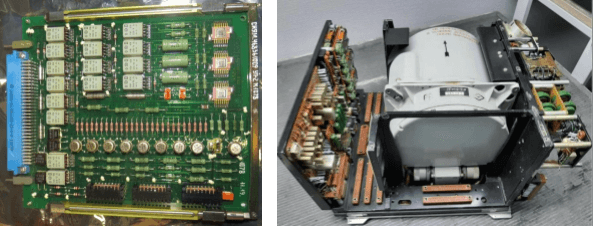UK components found in Russian equipment
| 11-05-2022 | By Robin Mitchell
A recent investigation has shown UK components used in Russian military equipment raising questions surrounding supply chains and end-user agreements. What do recovered parts tell us about the Russian army, what TT Electronics parts were found, and how do end-user agreements make it hard to track where parts go?
What do recovered parts tell us about the state of the Russian army?
More than two months into the conflict, Ukraine has continued to hold its ground while the vast majority of countries show their support. Additionally, the conflict has also demonstrated the incompetence of the Russian arm through poor tactics, inability to maintain equipment, and lack of experience in war.
But from an engineering perspective, the destruction of Russian military equipment has revealed many interesting facts regarding the components they use, where they come from, and how old they are. From anti-aircraft platforms to tanks, large portions of the Russian army have been shown to use Soviet-era technology. While the Ukrainian military is also reliant on such technology, the modern military weapon aid from the west has proven to be highly effective.
However, the salvaging of Russian cruise missiles has revealed that the electronics being used are directly from 1960’s designs. Photographs being shared around social media show large PCBs with rectangular traces, large discrete transistors and operational amplifiers, resistors, and some flatpack SMD devices with metal shielding.

Recovered Russian military electronics – Image courtesy Odessa Journal
Some users have commented that the SMD devices may be of a more modern design, but large PCBs with through-hole components suggest the use of an older design. A navigation system has also been shared, which shows multiple large single-sided PCBs with through-hole resistors, capacitors, and transistors. The fact that many of these missiles have been reported as missing their targets provides additional evidence of ageing equipment.
British components found in Russian equipment
A new report from the Sunday Times revealed that British components have been found in the Russian air defence system Borisoglebsk-2 after being captured by Ukrainian forces. Specifically, parts from TT Electronics have been found in the defence system, and TT Electronics have now confirmed that sales to Russia have been made in the past.
However, TT Electronics also stated that the parts found (such as high-frequency transistors) are not listed for military use, and all sales to Russia had end-user agreements with a strict clause on non-military use. If this statement from TT Electronics is true, then it suggests that not only has Russia used components illegally, but non-military grade parts are finding their way into military equipment.
While there may be those that feel TT Electronics should have never sold such parts to Russia in the first place, this discovery could be a blessing in disguise. There is a reason why components are graded for environments, whether it is commercial, automotive, industrial, military, or medical, and that is because some environments can be particularly harsh.
For example, parts used in industrial applications generally require a wide operating temperature (sometimes as high as 150˚C) due to the extreme temperatures involved. Thus, using a standard off-the-shelf part used in commercial environments in an industrial environment can result in device failure. The same applies to military equipment; strong vibrations, potential projectile impacts, and temperature swings can be extremely demanding on any component. Cheap commercial parts will not be able to reliably survive in such an environment.
As such, the use of commercial equipment in military equipment could see that equipment easily damaged from basic use on the front line (whether it’s hitting a pothole, being exposed to Molotov cocktails, or a small explosive), thus giving the Ukrainian forces an edge.
How do end agreements make component tracking hard?
When it comes to military-grade components, controlling exports is a straightforward task to achieve as most manufacturers will be compliant with the law. Those that are not will often be found, especially those that reside in countries such as the US and UK, and considering that developing such hardware is extremely challenging means that there are very few who have such opportunities. Of course, we often hear about western military equipment being used in conflicts, but these are generally sanctioned by the respective government (such as arms sales).
But trying to stop a country from using consumer-grade equipment in military applications is hugely challenging for numerous reasons. For example, end-user agreements restricting a part from being used in military equipment are only applicable if the local government bothers to enforce the agreement. In the case of Russia, it is likely that the Russian government would never prosecute suppliers who help manufacture Russian military equipment.
Additionally, such end-agreements may only cover how the receiver will use the parts. For example, a component distributor may obtain parts from the west with an agreement not to give them to military users. However, selling the parts to another distributor who may then supply the parts to military manufacturers might not breach the end-user agreement.
Overall, TT Electronics cannot be blamed for selling commercial-grade components to Russia, especially when it had asked for those parts not to be used in military equipment. Furthermore, Russia is playing an extremely risky game by using commercial-grade parts in their military equipment, and it may even contribute to a large number of failures the Russian army has faced in Ukraine.

